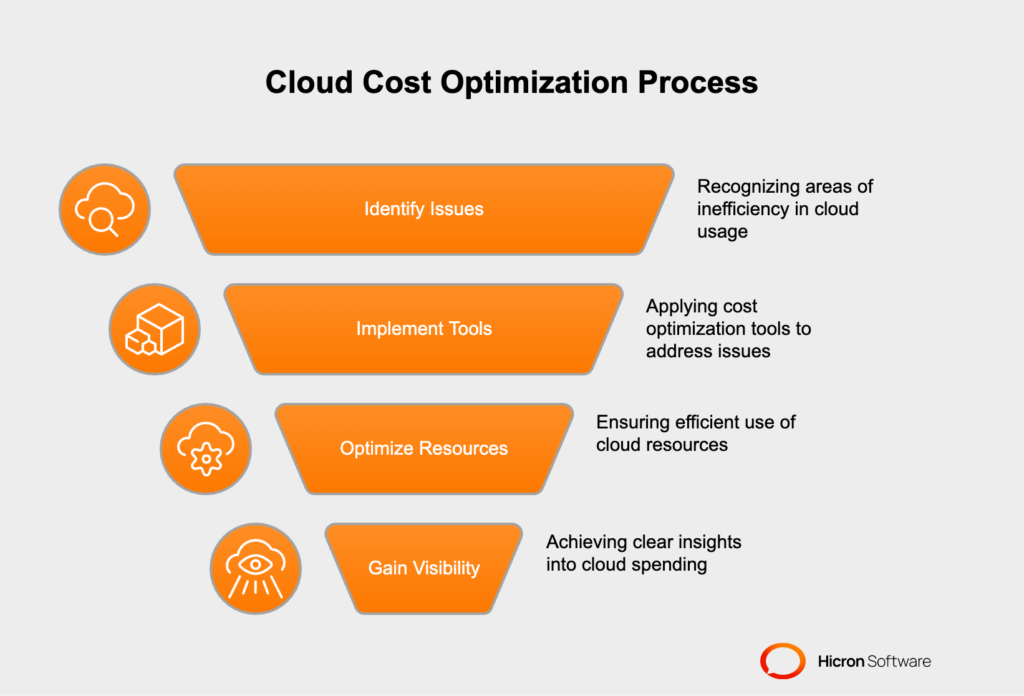How to get the best out of Microsoft Azure Cloud service for your business?
- August 23
- 20 min

The rapid adoption of cloud infrastructure has transformed the way businesses operate, offering unparalleled flexibility and scalability. However, with this shift comes a significant challenge: managing cloud costs. Without a proper strategy, cloud expenses can quickly spiral out of control, eating into budgets and reducing the ROI of cloud investments. Fortunately, many powerful tools are available to help businesses monitor, analyze, and optimize their cloud expenditures.
This blog post dives into the importance of cloud cost optimization and explores some of the best tools to ensure your business gets the most out of its cloud investment.
Optimizing cloud costs is not just about saving money—it’s about making every dollar count. Businesses, whether startups or enterprises, often face these common scenarios that necessitate cost optimization:
Failing to address these issues can hinder innovation and reduce competitive advantage. By leveraging cost optimization tools, businesses can regain control of their cloud spending, ensuring that resources are used efficiently and effectively.

Now, let’s explore some of the best tools designed to achieve this.
For businesses using AWS, Cost Explorer is a powerful tool to gain insights into usage patterns and costs.
Key Features:
Best For: AWS users who want detailed control and reporting of their cloud spend.
AWS Cost Explorer is free for basic features, making it an accessible option for businesses already on the platform.
Planning resources on Google Cloud becomes easier with this precise and transparent cost estimation tool.
Key Features:
Best For: Google Cloud users looking to plan resource costs before deployment.
This tool is free to use and invaluable for accurate budgeting.
Azure’s integrated solution empowers businesses to track spending and optimize budgets.
Azure Cost Management is free with Azure subscriptions, providing a seamless experience for Azure users.
CloudHealth is a dedicated multi-cloud cost management solution that produces actionable recommendations based on usage.
Key Features:
Best For: Enterprises managing workflows across multiple cloud providers.
Custom pricing is offered, making it scalable for businesses of any size.
Spot.io stands out for its ability to optimize the use of spot instances and reduce compute costs.
Key Features:
Best For: Businesses with dynamic workloads seeking tailored resource management.
Spot.io offers a flexible pricing model to accommodate different business needs.
Apptio Cloudability provides granular visibility into cloud spending and actionable insights to refine operations.
Key Features:
Best For: Businesses with complex multi-cloud environments looking for comprehensive reporting.
Its enterprise focus is matched by adjustable pricing plans.
For businesses running workloads on Kubernetes, Kubecost simplifies cost tracking and optimization.
Key Features:
Best For: Kubernetes-heavy infrastructures needing cost clarity.
Kubecost’s free tier is suitable for smaller workloads, with paid options available for premium features.
Rightsize specializes in identifying and resolving inefficiencies in cloud usage.
Key Features:
Best For: Enterprises juggling multiple cloud decisions for cost and compliance.
Custom enterprise-level pricing is designed to scale with user needs.
A standout for Kubernetes users, Cast AI employs AI-driven recommendations to optimize resources.
Key Features:
Best For: Multi-cloud Kubernetes users seeking significant cost reductions.
Cast AI offers a tiered pricing model, with a free plan for basic capabilities.
Idle cloud resources can drain budgets. ParkMyCloud mitigates this through automation.
Key Features:
Best For: Businesses looking for a straightforward way to cut costs without manual setups.
Plans start at $199/month, making it a cost-effective solution for moderate workloads.
|
Tool Name |
Key Features |
Supported Platforms |
Pricing |
|
Visualizes spend with charts, analyzes usage trends, predicts costs, and creates custom alerts. |
AWS |
Free for basic features; advanced features in paid AWS support plans. |
|
|
Customizable estimates, real-time pricing calculations, committed-use discount insights. |
Google Cloud |
Free to use. |
|
|
Real-time monitoring, cross-cloud cost insights, identifies overprovisioned resources. |
Azure (limited AWS integration) |
Free with Azure services. |
|
|
Multi-cloud usage analysis, policy automation, customizable dashboards. |
AWS, Azure, Google Cloud, and more |
Custom pricing. |
|
|
Manages spot instances, optimizes underused resources, integrates with Kubernetes and serverless environments. |
AWS, Azure, Google Cloud |
Custom pricing. |
|
|
Tracks multi-cloud costs, predictive analytics, Reserved Instance optimization tools. |
AWS, Azure, Google Cloud |
Custom enterprise plans. |
|
|
Tracks Kubernetes costs, identifies over-provisioned resources, supports real-time cost allocation. |
Kubernetes on AWS, Azure, Google Cloud, on-premises |
Free tier; paid plans for advanced features. |
|
|
Automates resource decommissioning, unified multi-cloud monitoring, compliance tracking. |
AWS, Azure, Google Cloud |
Custom pricing plans. |
|
|
AI-driven cost optimization, real-time scaling, multi-cloud Kubernetes integration. |
AWS, Azure, Google Cloud, DigitalOcean |
Free tier; custom pricing for premium features. |
|
|
Automates scheduling for idle cloud resources, offers cost comparison reports, works with multiple providers. |
AWS, Azure, Google Cloud, IBM Cloud |
Plans starting at $199/month; free trial available. |
The tools above make cloud cost optimization simpler, actionable, and data-driven. Whether you’re managing a single cloud setup or a complex multi-cloud environment, leveraging the right tool can significantly impact your bottom line. Start by evaluating your current cloud usage, identifying areas of inefficiency, and selecting the right tools to address those gaps.
By adopting a cost-conscious strategy and choosing the right solutions for your needs, your business can maximize the value of cloud infrastructure while minimizing unnecessary expenses. Take the first step today and regain control over your cloud costs!
